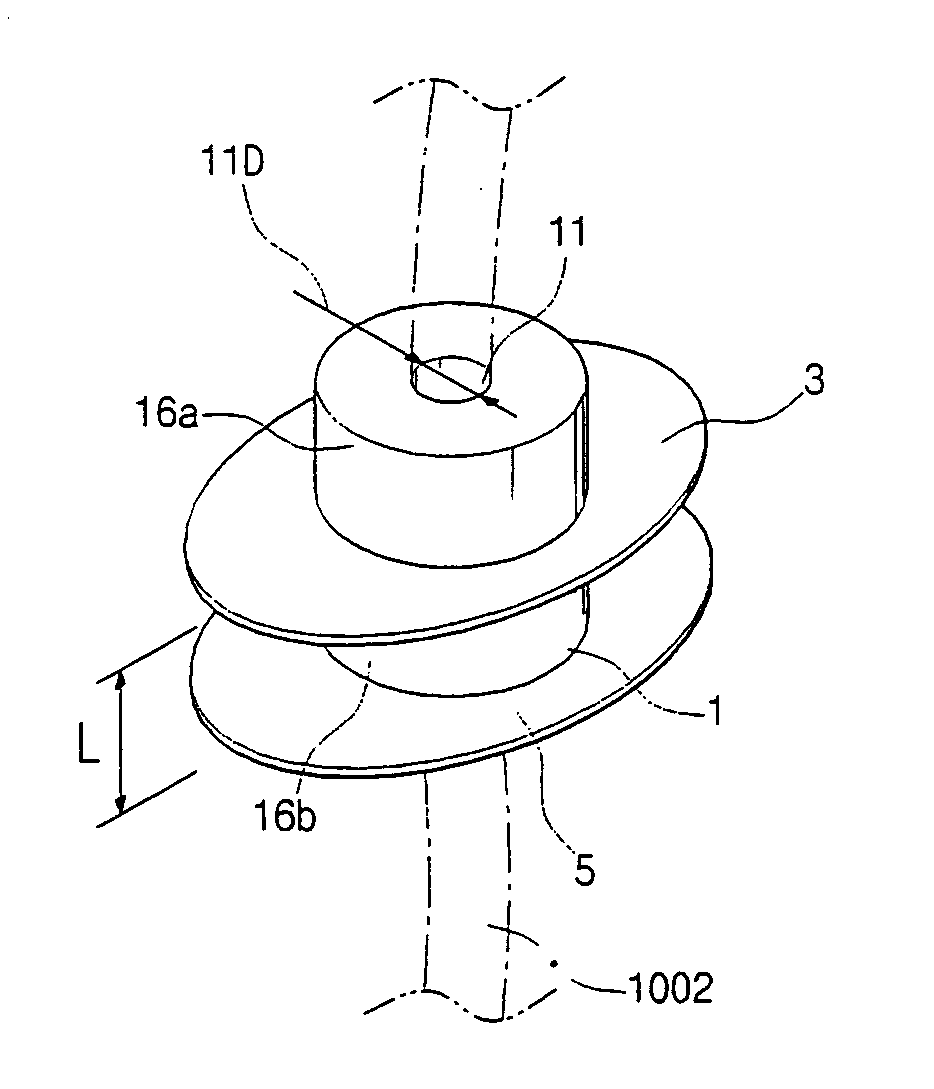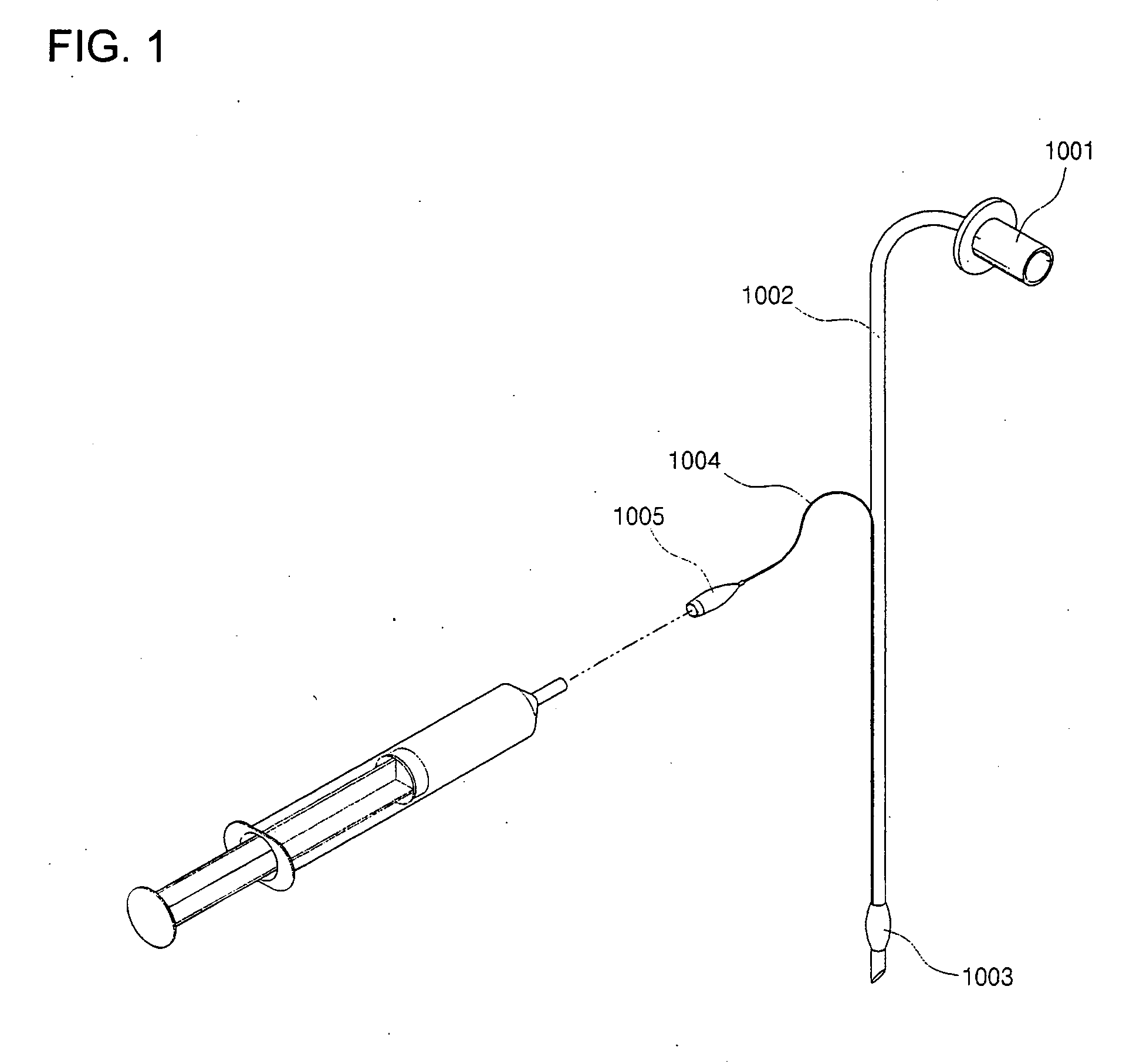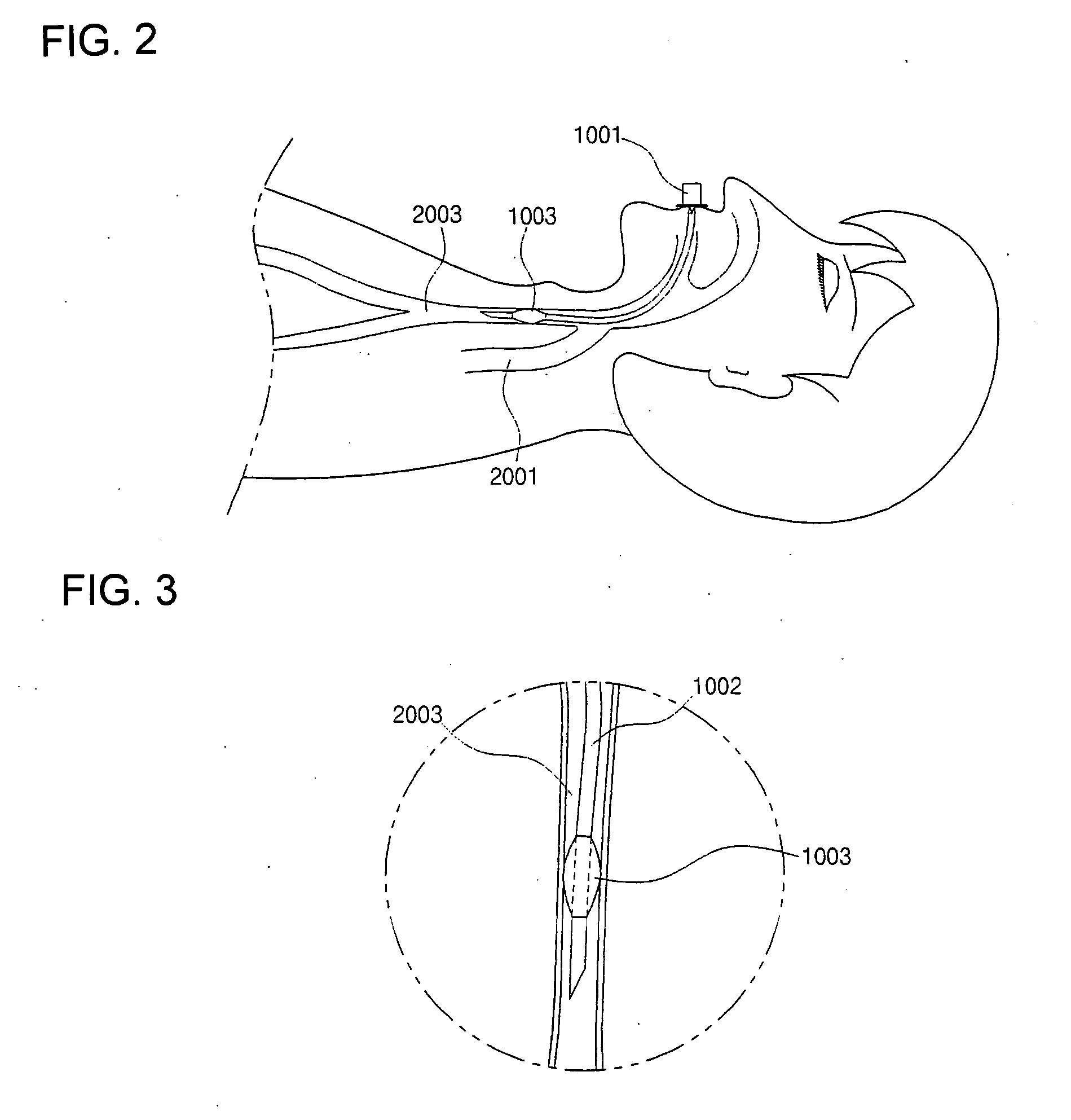However, it is difficult to fix the endotracheal tube firmly at an exact position by means only of the
cuff 1003.
Unless a suitable ventilating device or a fixing device thereof is provided,
brain damage or even death may result.
While the endotracheal tube has many merits, it can cause a complication after the surgery has been completed, such as a
sore throat and hoarseness.
Even though the
sore throat is a temporary complication from which the patient can recover naturally within 72 hours, it can bring about serious discomfort to the patient.
However, recent research shows that
lidocaine is not so effective.
However, in conventional devices, the fixing of the
cuff has been achieved only by the
cuff itself, which inevitably has brought about an overexpansion of the cuff, that is, an expansion beyond the minimum range of expansion needed to prevent the
oxygen or
anesthetic from flowing backward.
In practice, it is very hard to select an appropriate endotracheal tube and to intubate and fix it.
Even an experienced doctor frequently makes a mistake, which may resulting from any of many factors, such as the physical diversity of patients and the diversity of situations where the
airway should be fixed.
In addition, over-
intubation may force the endotracheal tube to be intubated into a
blood vessel that is connected to only a single
lung of the patient, so that it provides air to one
lung rather than to both lungs.
In such a case, the result may be fatal.
As a result, it is true that a variety of fatal medical accidents can occur when the endotracheal tube is not fixed firmly enough.
Further, even when the endotracheal tube is intubated correctly, a number of different difficulties may follow in fixing the intubated tube.
However, such a method does not fix the intubated endotracheal tube strongly enough as reliably to prevent it from moving.
Especially, an endotracheal tube intubated into the
airway of a young child or an infant may deviate from the correct position in the
airway even with a small movement of the endotracheal tube.
Moreover, generally two persons are required to fix the endotracheal tube by using the
adhesive bandage,
wasting manpower.
These problems are most serious in a young child or an infant.
However, even with this technique, it is still very difficult to fix the endotracheal tube perfectly in the exact position.
In such a case the doctor should remove the band, relocate the endotracheal tube and bind the band again, which is burdensome in a
medical emergency.
However, in the conventional way of fixing the endotracheal tube by using a band or the like, such suction cannot be performed efficiently because of the difficulty in securing enough space for performing suction or the difficulty in moving the suction device.
Further, when performing a
surgical operation in the interior of the mouth or on a patient in a
prone position, the conventional method of binding a band is not sufficient for performing the surgery because it makes movement of the fixed endotracheal tube more probable.
Thus, the conventional method has provided medical services that are neither fast nor proper.
The problem increases in the case of surgery for a patient in a prone position, where it is impossible to fix the intubated endotracheal tube completely by the conventional band binding method.
Thus, the possibility still exists that permanent damage including death could occur.
Moreover, the cuff is more likely to be overinflated in the conventional method, resulting in many complications after the
intubation of the endotracheal tube, such as a
sore throat.
Considering that the endotracheal tube is usually required in a very urgent emergency, the conventional method of fixing the endotracheal tube by binding a band is very problematic both in the speed and the reliability of the fixation.
When a dentist or a plastic surgeon performs surgery on the interior of the mouth, or an otorhinolaryngologist performs surgery on the tonsils, the procedure for moving the fixed endotracheal tube in the conventional method is very burdensome and difficult, as aforementioned.
 Login to View More
Login to View More  Login to View More
Login to View More 


